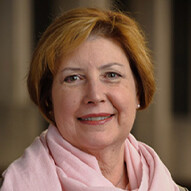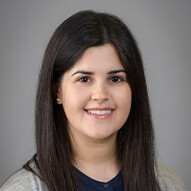Pediatric gene therapy for neurological disorders
Our pediatric neurologists and their teams have expertise in the latest pediatric gene therapies to treat neurological disorders. Providers across North Texas and nearby states send their patients to Children’s Health℠ for the exceptional care we provide before, during and after gene therapy. With our clinical trial experience using these therapies, we understand how to manage your child’s ongoing care. We're dedicated to life-changing care that helps your child live better.
What is pediatric gene therapy for neurological disorders?
Gene therapies are medical techniques that can manage or prevent the symptoms of diseases by treating the genetic problems that cause them. Genes contain instructions for cells to make proteins that control how the body works. Missing or mutated (changed) genes can affect how these proteins work, which can lead to diseases.
Gene therapy for neurological disorders aims to fix or replace specific missing or mutated genes to change the course of certain neurological diseases. Although it isn’t a cure, pediatric gene therapy can improve children’s health by reducing symptoms, preventing these diseases from getting worse or stopping the diseases altogether.
How does pediatric gene therapy for neurological disorders work?
In our Pediatric Gene Therapy Program, we currently offer two types of gene transfer therapies for neurological disorders, also called gene replacement therapies. Both types insert a new, working copy of a missing or mutated gene into a child’s cells. The goal of these therapies is to slow or stop the disease.
The two types of gene transfer therapy we use for neurological disorders are:
In vivo gene transfer therapy
In vivo gene therapy delivers the working gene directly into the body through an IV infusion. An infusion is a way of putting medication into the bloodstream through a needle and catheter (thin tube) inserted into a vein.
Children’s Health is a qualified treatment center for these in vivo gene therapies for neurological disorders:
Zolgensma® - This treatment helps keep muscles working the way they should in children who have spinal muscular atrophy.
Elevidys - This therapy treats Duchenne muscular dystrophy. It helps preserve muscle strength and slow the loss of muscle tissue.
Ex vivo gene transfer therapy
Ex vivo gene therapy removes cells from a child, adds the working gene to the cells and returns the modified cells to the child via infusion. As part of the process, children need to have chemotherapy before the infusion to prepare their bone marrow for the treatment.
Children’s Health is a qualified treatment center for these ex vivo gene therapies for neurological disorders:
Skysona™- This one-time gene therapy treats boys with early, active cerebral adrenoleukodystrophy (CALD) and slows the progression of damage to the brain and slows the decline in neurologic function.
Lenmeldy™ - Gene therapy for metachromatic leukodystrophy slows progression of this disease and its symptoms, including loss of movement and thinking abilities.
What are the benefits of pediatric gene therapy for neurological disorders?
Gene therapies provide new hope for children and families with certain incurable neurological disorders.
Gene therapies provide benefits that include:
Treatment for life-limiting diseases - Before gene therapy, children had no treatment options beyond supportive and end-of-life care to manage symptoms. Gene therapies directly treat the genetic disorders and their causes, which can slow or even stop these disorders.
Improved quality of life - Because gene therapies can slow or stop disease, children can continue to build their thinking, movement and other developmental skills. Gene therapies can help children grow and develop so they can participate in activities at home, at school and with friends.
What are the side effects and risks of pediatric gene therapy for neurological disorders?
Our doctors will discuss the possible benefits, risks and side effects of gene therapy before you decide to pursue treatment for your child. We’ll also discuss the care your child will need after receiving gene therapy. This ongoing care includes years of follow-up visits to monitor your child for any long-term side effects. Our care team also provides comprehensive care for children with any neurological disorder to manage their overall health.
What to expect with pediatric gene therapy for neurological disorders
At Children’s Health, our gene therapy team includes experts in neurology, genetics, neuropsychology, cardiology, hepatology, nephrology, immunology, critical care nursing and physical therapy. With years of experience using these treatments during the research phase, we understand how to use gene therapy as part of your child’s ongoing care plan.
Each of these gene therapies is a one-time, single-dose infusion. The treatment processes for in vivo and ex vivo gene therapy differ slightly.
What to expect: In vivo gene therapy for neurological disorders
Before treatment
If your child is a candidate for gene therapy, you and your child will come to Children’s Health to meet with our team. We’ll describe the details of the gene therapy that your child will receive, including how it works, what to expect and possible side effects.
Once you decide to move forward, your child will have some tests before treatment:
Blood tests to confirm their eligibility for the therapy and make sure they’re otherwise healthy
Testing with our physical therapists to compare their strength and movement before and after receiving gene therapy
Your child can meet with our caring Child Life specialists anytime during the treatment process. These providers help them understand and cope with medical procedures by explaining them in age-appropriate ways. Our Child Life team can help your child feel calmer and more relaxed during their visits.
During treatment
Plan to spend most of the day at Children’s Health on the scheduled infusion date. You and your child will arrive early in the morning, and our team will prepare your child for the infusion. It may take a few hours to prepare the medication. The infusion itself takes only about an hour – and you can be with your child the whole time.
After treatment
After the infusion, we monitor your child for a couple of hours to make sure they’re feeling well. Then, you can take them home. We’ll also provide you with a plan for your child’s follow-up care.
What to expect: Ex Vivo gene therapy for neurological disorders
Before treatment
The first visit and testing are the same as for in vivo gene therapy. You and your child will meet with our team to learn about the therapy. Your child will also have some tests before treatment.
Then, you’ll bring your child to Children’s Health for a treatment that they need before they can have gene therapy. Your child will stay in the hospital for a few days while they receive medication that moves stem cells from their bone marrow into their bloodstream. Then, we connect your child to a machine that removes stem cells from their blood. It may take a few days to gather enough cells for treatment.
We send your child’s blood stem cells to a lab, where technicians make your child’s personalized gene therapy by adding working copies of a specific gene to your child’s cells. This step can take up to 12 weeks.
During treatment
After we receive your child’s gene therapy, you’ll bring your child to Children’s Health to prepare for the infusion. Part of that preparation is to receive chemotherapy in the hospital for a few days. Chemotherapy helps prepare their bone marrow for the treatment.
On the infusion date, your child receives the personalized gene therapy, which takes a few hours. You can be with them in the infusion room as they receive the therapy.
After treatment
Your child will stay in the hospital for one to two months after the infusion, where our team will monitor them closely for any side effects. Your child will have blood and other tests during their hospital stay to check their health.
Long-term follow-up care after gene therapy for neurological disorders
For follow-up care, we’ll schedule visits for your child to have blood tests to monitor their health. How often they need blood tests depends on which gene therapy your child receives. It’s typically every week for about three months. Your child will also have frequent clinic visits for the first several months.
Because your child still has the neurological condition, they need close follow-up care with a neurologist for several years after gene therapy. We’ll help you schedule their visits and exams with the care team, so your child is sure to receive the care they need, according to the latest treatment guidelines. Those guidelines include medications, physical therapy and other treatment to manage possible complications of the neurological disease.
How do I prepare my child for pediatric gene therapy for neurological disorders?
A Child Life specialist will meet with you and your child before treatment begins. We help ease your child’s fears by explaining their treatment process in child-friendly ways. Our caring team helps your child understand what’s happening and why, so they feel more comfortable during their treatment.
What questions should I ask my provider about pediatric gene therapy for neurological disorders?
How long has this gene therapy been offered?
How will you manage any side effects?
How will we know if gene therapy is working for their neurological disorder?
Is this gene therapy covered by health insurance?
Pediatric gene therapy for neurological disorders doctors and providers
Our doctors, nurses and other providers have advanced training and years of experience in caring for children with rare neurogenetic disorders. By participating in research to advance the standard of care, we’re able to bring life-changing treatment options to the children in our care.
 Berge Minassian, MDPediatric Neurologist
Berge Minassian, MDPediatric Neurologist Dallas Armstrong, MDPediatric Neurologist
Dallas Armstrong, MDPediatric Neurologist Kaitlin Batley, MDPediatric Neurologist
Kaitlin Batley, MDPediatric Neurologist Susan Iannaccone, MDPediatric Neurologist
Susan Iannaccone, MDPediatric Neurologist Saima Kayani, MDPediatric Neurologist
Saima Kayani, MDPediatric Neurologist Lauren Sanchez, MDPediatric Neurologist
Lauren Sanchez, MDPediatric Neurologist Afsaneh Talai, MDPediatric Neurologist
Afsaneh Talai, MDPediatric Neurologist
Frequently Asked Questions
Which neurological disorders can be treated with gene therapy?
Who is eligible for pediatric gene therapy for neurological disorders?
Is gene therapy a permanent cure for neurological disorders?
Is pediatric gene therapy for neurological disorders safe?
How old do you have to be to get gene therapy for neurological disorders?
Children's Health Resources
Leukodystrophies:
Muscular dystrophy:
Spinal muscular atrophy: